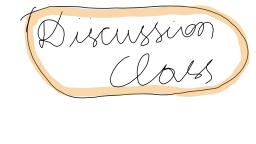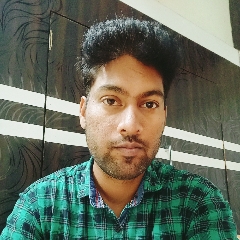Question 1 :
Light moves from air into water. The light makes an angle of $47^{\circ}$ with the normal in the air. What angle will it make with the normal in the water?<br>The index of refraction for air is $1.00$.<br>The index of refraction for water is $1.33$
Question 2 :
What is the power of the lens, if the far point of a short sighted eye is $200\ cm$?
Question 3 :
In case of a virtual and erect image, the magnification created by the mirror is
Question 4 :
The focal length of a convex lens is $25cm$. Find its power with sign.<br/>
Question 6 :
State whether given statement is True or False<br/>A ray of light incident parallel to the principal axis of a lens, passes undeviated after refraction.<br/>
Question 7 :
Assertion: If refractive index of one medium is equal to refractive index of second medium, then beam does not bend at all.
Reason: The bending of light does not depend on refractive indices of media.
Question 8 :
When the height of the image is less than the height of the object, then magnification will be
Question 9 :
A ray of light is incident on the surface of transparent medium at an angle of $45^o$ and is refracted in the medium at an angle of $30^o$. What will be the velocity of light in the transparent medium ? <br/>
Question 10 :
A ray of light travelling in air is incident on the plane of a transparent medium. The angle of incident is $45^0$ and that of refraction is $30^0$. The refractive index of the medium with respect to air is:
Question 11 :
What would you use to obtain  a virtual and erect image?
Question 12 :
A ray of light travelling inside a rectangular glass block of refractive index $\sqrt2$ is incident on the glass-air surface at an angle o incidence of $45^o$.The refractive index of air is one. Under these conditions the ray will
Question 13 :
Images formed by which of the following arrangement isnot Virtual and erect ?
Question 14 :
Assertion: Power of the lens is larger if its focal length is smaller.
Reason: Power of the lens measures the ability to converge or diverge the refracted rays.
Question 15 :
Two thin lenses of focal lengths $20 cm$ and $25 cm$ are placed in contact. The effective power of the combination is
Question 16 :
A square card of side length 1 mm is being seen through a magnifying lens of focal length 10 cm. The card is placed at a distance of 9 cm from the lens. The apparent area of the card through the lens is
Question 17 :
If the angle of incidence is i and that of refraction is r. Then the speed of light in the medium to which the light is reflected from air is?
Question 18 :
Two convex lens of focal lengths ${f}_{1}$ and ${f}_{2}$ form images with magnification ${m}_{1}$ and ${m}_{2}$, when used individually for an object kept at the same distance from the lenses. Then ${ f }_{ 1 }/{ f }_{ 2 }$
Question 20 :
A convex lens of focal length 80 cm and concave lens of focal length 50 cm are combined together. What will be their resultant power?<br>
Question 21 :
Let the x-z plane be the boundary between two transparent media. Medium $1$ in $z\ge 0$ has a refractive index of $\sqrt { 2 } $ and medium $2$ with $z< 0$ has refractive index of $\sqrt { 3 } $. A ray of light in medium $1$ given by the vector $\vec { A } =6\sqrt { 3 } \hat { i } +8\sqrt { 3 } \hat { j } -10\hat { k } $ is incident on the plane of separation. The angle of refraction in medium $2$ is:
Question 22 :
A small object of linear dimension $x$ lies on the axis of an optical mirror of local length $f$ at a distance $a$ from mirror. The linear dimension of image:
Question 23 :
A $2.5$ dioptre lens forms a virtual image which is $4$ times the object placed perpendicularly on the lens. Then the required distance of the object from the lens is .
Question 24 :
The distance between an object and its doubly magnified image by a concave mirror is: [ Assume $f$ = focal length]
Question 25 :
In the table below, column I lists various mirrors  and lenses and column II their uses, qualities or properties.<br/><table class="wysiwyg-table"><tbody><tr><td>column  I</td><td>Column II</td></tr><tr><td>I. Plane mirror</td><td>A. Feels thinner in the middle.</td></tr><tr><td>II. Concave mirror</td><td>B. Always forms virtual image.</td></tr><tr><td>III. Convex mirror</td><td>C. Always forms virtual image of smaller size.</td></tr><tr><td>IV. Concave lens </td><td>D. Is used by dentists to examine teeth.</td></tr><tr><td>V. Convex lens</td><td>E. Can be used as reading glass.<br/></td></tr></tbody></table>The correct matching is:



























